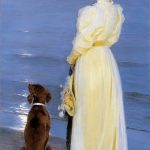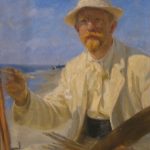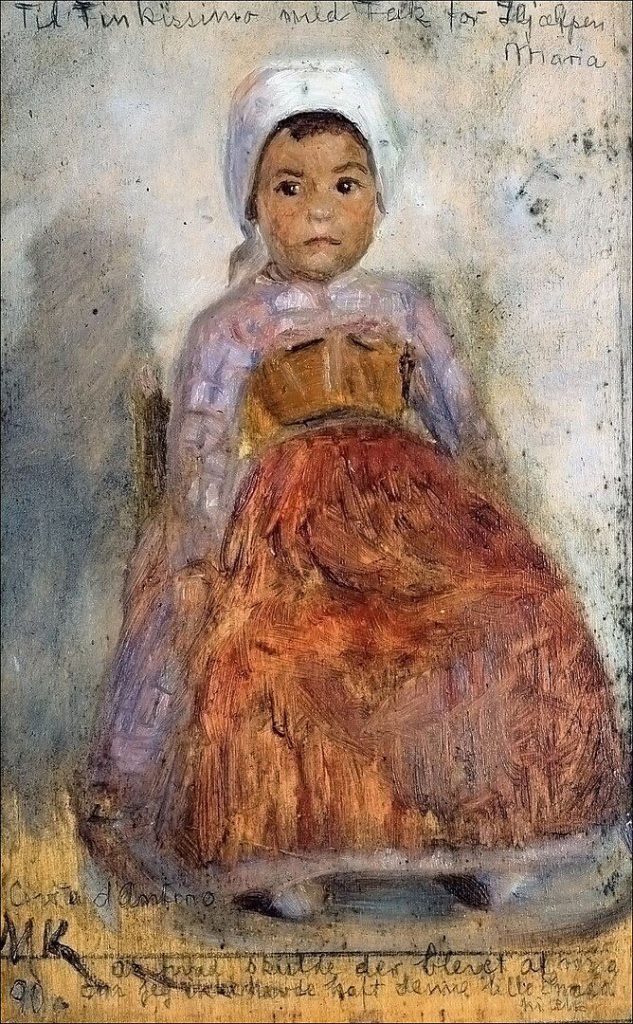
Marie Krøyer, born on June 14, 1867, in Frederiksberg, Denmark, was an iconic figure in the cultural and artistic circles of the late 19th and early 20th centuries. Renowned for her beauty, intellect, and role as a muse to prominent Scandinavian artists, Krøyer’s life unfolded against the backdrop of societal changes, artistic movements, and her own complex journey as a woman in the creative sphere.
Marie Krøyer’s early years were marked by exposure to the intellectual and artistic milieu of her time. Growing up in Copenhagen, she developed a keen interest in literature and the arts. Her family’s connections with the cultural elite provided her with opportunities to engage with leading artists and thinkers, setting the stage for her later involvement in the artistic circles of the period.
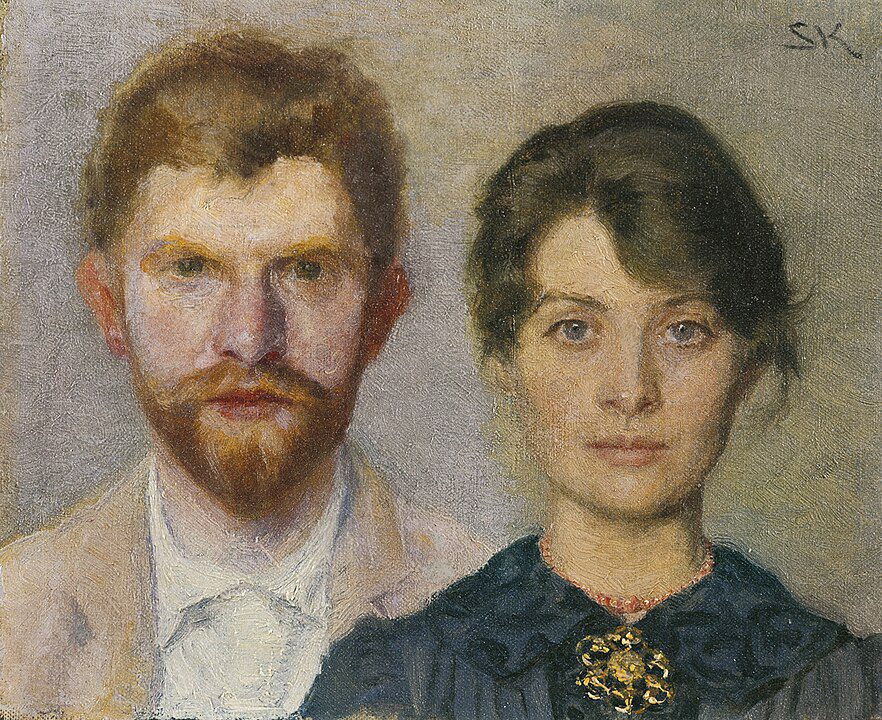
In 1889, Marie married the acclaimed Danish painter Peder Severin Krøyer, a pivotal moment that would shape the trajectory of her life. The marriage not only marked the beginning of her role as a muse but also thrust her into the heart of the thriving Scandinavian art scene. Krøyer’s presence in this milieu would inspire and influence the works of some of the most celebrated painters of the time.
The Muse of Skagen
The Krøyer marriage became synonymous with the artistic community in Skagen, a coastal town in northern Denmark. The couple, along with other artists, formed the Skagen Painters, a group that sought inspiration from the unique quality of light in the region. Marie’s captivating presence and striking features made her an ideal muse for these artists, who were drawn to her as a subject of beauty and inspiration.
The Skagen period marked a prolific phase in Danish art, characterized by the plein air painting of landscapes and seascapes bathed in the soft, northern light. Marie Krøyer, often depicted in the works of her husband and other Skagen painters, became an integral part of this artistic movement. Her ethereal beauty and the luminosity of the northern light in these paintings contributed to the mystique surrounding her persona.
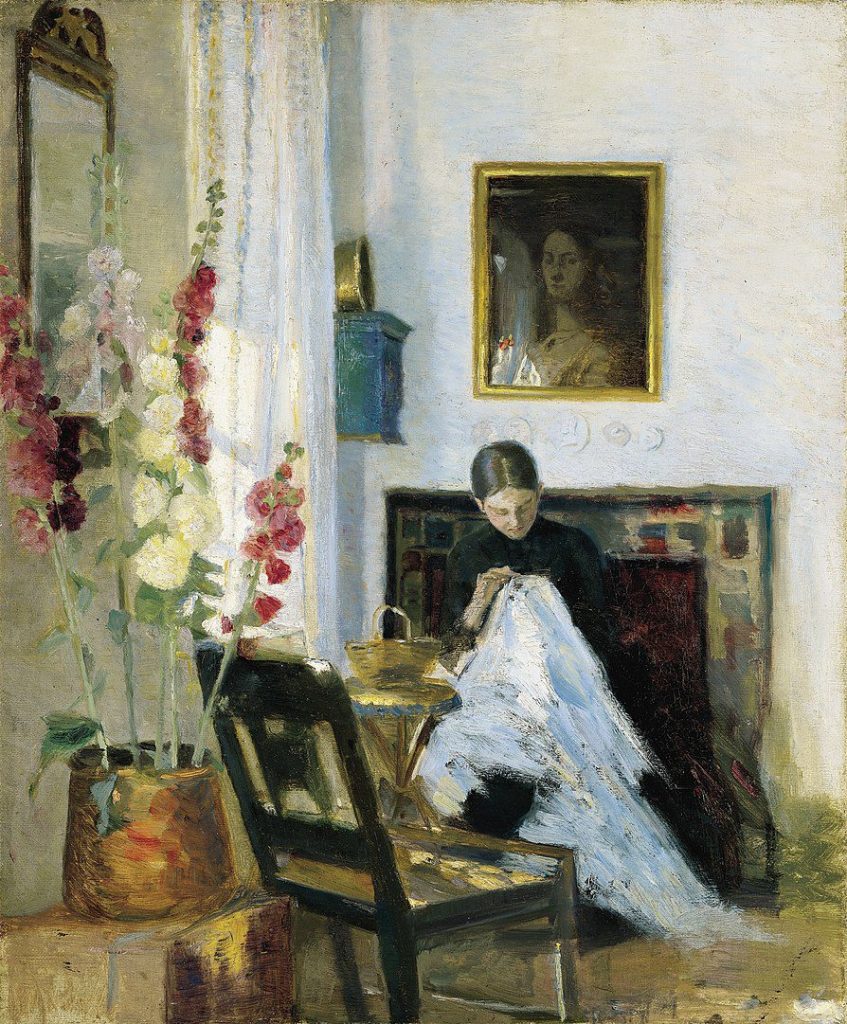
While the Skagen years were marked by artistic success, Marie Krøyer’s personal life was marked by profound challenges. The marriage between Marie and Peder Severin Krøyer faced strains, exacerbated by the demanding nature of his artistic pursuits and his struggle with mental health issues. Marie found herself navigating the complexities of being a muse while coping with the emotional toll of her husband’s struggles.
The duality of Marie’s role as a muse and her own personal challenges added layers of complexity to her identity. As Peder Severin Krøyer grappled with mental illness, Marie became a pillar of strength, supporting both him and their family. Her resilience in the face of personal adversity underscored the depth of her character beyond the realm of musehood.
In 1891, Marie Krøyer embarked on a solo journey to Paris, a pivotal moment that marked her pursuit of artistic expression independent of her role as a muse. Immersed in the vibrant artistic environment of the French capital, she engaged with the cultural ferment of the time. Marie’s exposure to the Parisian avant-garde, including encounters with artists like Auguste Rodin, fueled her own artistic awakening.
During her time in Paris, Marie honed her skills in painting and sculpture, embracing a newfound independence in her artistic pursuits. The experience broadened her horizons and allowed her to explore her own creative voice. This Parisian sojourn represented a period of personal growth and self-discovery for Marie, transcending her identity as a muse and establishing her as an artist in her own right.
Return to Denmark
Marie Krøyer’s return to Denmark marked a shift in focus as she embraced her role as a mother. Her daughter, Vibeke, was born in 1895, bringing a new dimension to Marie’s life. Motherhood became a central aspect of her identity, and she navigated the delicate balance between family responsibilities and her artistic pursuits.
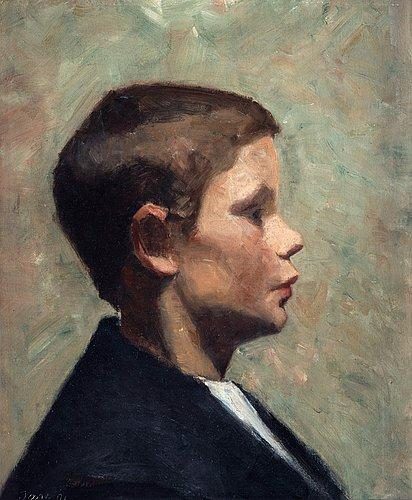
The Krøyer family’s life in Skagen became a sanctuary where Marie found solace in the familial bonds that complemented her artistic endeavors. Her paintings from this period often depicted domestic scenes, capturing the tender moments of motherhood and the serene beauty of family life. Marie’s ability to infuse her art with the warmth and intimacy of domesticity reflected the multifaceted nature of her identity.
Marie Krøyer’s artistic legacy endures through her contributions to both the Skagen Painters’ oeuvre and her own independent works. Her portraits, often bathed in the soft, diffused light of Skagen, continue to captivate audiences with their timeless beauty. As a muse and artist, Marie’s impact extended beyond her own era, influencing subsequent generations of artists and admirers.
In her later years, Marie faced health challenges, including struggles with depression. Her resilience, however, remained evident as she continued to engage with the artistic community. Marie Krøyer passed away on May 25, 1940, leaving behind a rich artistic legacy that continues to be celebrated for its contribution to the cultural heritage of Denmark.

Marie Krøyer’s life, marked by the interplay of musehood, personal challenges, and artistic pursuits, remains a poignant chapter in the annals of Danish art history. Her enduring presence in the works of the Skagen Painters and her independent forays into art stand as a testament to her enduring influence on the Nordic art scene, immortalizing her as a muse of the northern light and a multifaceted artist in her own right.


